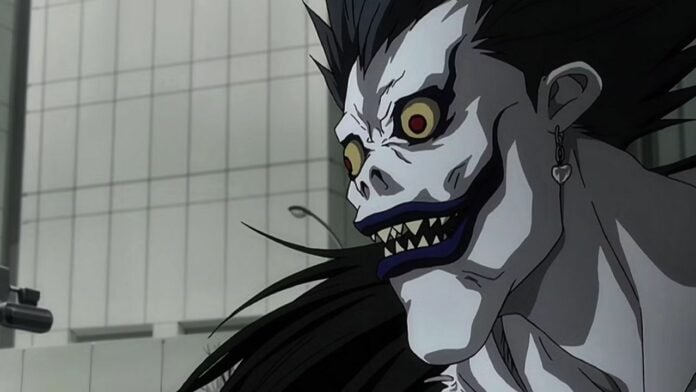In Death Note, a manga and anime series created by Tsugumi Ohba and Takeshi Obata, Shinigami (Death Gods) play a crucial role, intertwining with the narrative’s central themes.
Beyond the series, Shinigami are also a part of traditional Japanese folklore, where they hold a significant cultural place. This article explores the role of Shinigami in both Death Note and Japanese folklore, examining their portrayal and the symbolic meanings they carry.
Shinigami in Death Note: More Than Just Death Gods
In Death Note, Shinigami are supernatural beings with the power to take human lives. The series introduces them as complex characters, each with distinct personalities and motivations.
The most notable Shinigami, Ryuk, becomes integral to the plot after dropping his Death Note into the human world, sparking the series’ central conflict.
In the series, Shinigami are portrayed as beings who exist in a realm separate from humans. They use Death Notes to extend their own lives, which contrasts with traditional depictions of death gods as impartial or disinterested in human affairs.
This unique portrayal adds depth to the Shinigami, making them more than just harbingers of death.
The Role and Powers of Shinigami
Shinigami in Death Note wield Death Notes, which allow them to end human lives by writing a person’s name while picturing their face. This power is bound by specific rules, which add complexity to the series’ narrative.
The Shinigami’s role in Death Note goes beyond causing death; they influence human actions and decisions, with Ryuk’s curiosity about humans driving much of the plot.
Shinigami and Their Impact on Human Characters
The presence of Shinigami in Death Note has a profound impact on the human characters, particularly Light Yagami, the protagonist. The interaction between Light and Ryuk explores themes of morality, power, and the corrupting influence of absolute control over life and death.
This relationship is central to understanding the moral dilemmas and psychological depth of the series.
Shinigami in Japanese Folklore
In traditional Japanese folklore, Shinigami are relatively late additions, emerging in the Edo period. They are often depicted as malevolent or trickster spirits associated with death.
Unlike their Death Note counterparts, folklore Shinigami do not typically have individual personalities or complex motives. Instead, they are seen as impersonal forces or omens related to death.
Cultural Interpretation and Symbolism
The portrayal of Shinigami in both Death Note and Japanese folklore reflects cultural attitudes towards death and morality. In Death Note, they symbolize the moral ambiguity and the complex relationship between power and mortality.
In folklore, they represent the inevitability of death and the cultural understanding of fate and destiny.
The role of Shinigami in Death Note and Japanese folklore presents two distinct yet interrelated interpretations of death gods. In Death Note, they are key drivers of the plot and are imbued with personality and agency, affecting and interacting with the human world in significant ways.
In contrast, traditional folklore portrays them as more enigmatic and impersonal forces. Both interpretations provide insight into cultural perceptions of death and the supernatural, highlighting the diverse ways in which Shinigami are conceptualized in Japanese culture and media.
Through their depictions, we gain a deeper understanding of the complex and multifaceted nature of these intriguing figures.

